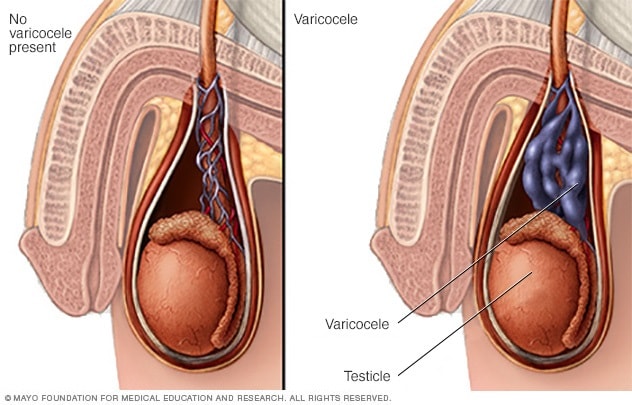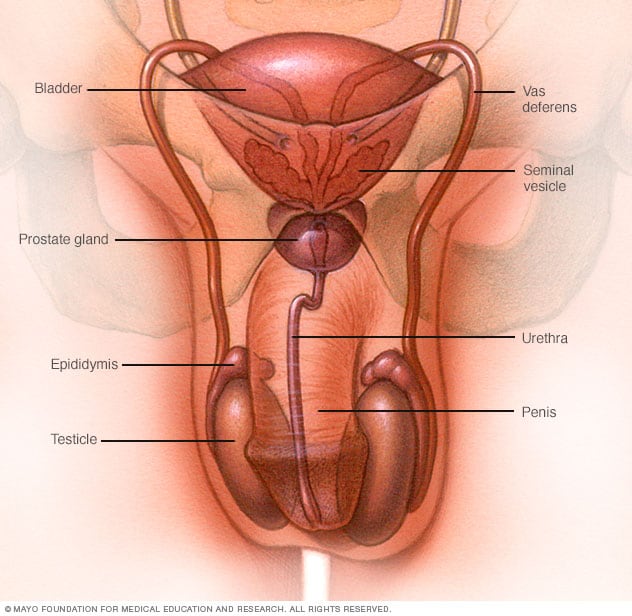 VaricoceleOpen pop-up dialog box
VaricoceleOpen pop-up dialog box
A varicocele (VAR-ih-koe-seel) is an enlargement of the veins within the loose bag of skin that holds your testicles (scrotum). A varicocele is similar to a varicose vein you might see in your leg.
Varicoceles are a common cause of low sperm production and decreased sperm quality, which can cause infertility. However, not all varicoceles affect sperm production. Varicoceles can also cause testicles to fail to develop normally or shrink.
Most varicoceles develop over time. Fortunately, most varicoceles are easy to diagnose and many don’t need treatment. If a varicocele causes symptoms, it often can be repaired surgically.
A varicocele often produces no signs or symptoms. Rarely, it might cause pain. The pain may:
With time, varicoceles might enlarge and become more noticeable. A varicocele has been described as looking like a “bag of worms.” The condition might cause a swollen testicle, almost always on the left side.
Because a varicocele usually causes no symptoms, it often requires no treatment. Varicoceles might be discovered during a fertility evaluation or a routine physical exam.
However, if you experience pain or swelling in your scrotum, discover a mass on your scrotum, notice that your testicles are different sizes, or develop a varicocele in your youth, or you’re having problems with fertility, contact your doctor. A number of conditions can cause a scrotal mass or testicular pain, some of which require immediate treatment.
 Male reproductive systemOpen pop-up dialog box
Male reproductive systemOpen pop-up dialog box
Your spermatic cord carries blood to and from your testicles. It’s not certain what causes varicoceles.
However, many experts believe a varicocele forms when the valves inside the veins in the cord prevent your blood from flowing properly. The resulting backup causes the veins to widen (dilate). This might cause damage to the testicle and result in worsened fertility.
Varicoceles often form during puberty. Varicoceles usually occur on the left side, most likely because of the position of the left testicular vein.
There don’t appear to be any significant risk factors for developing a varicocele.
A varicocele might cause: